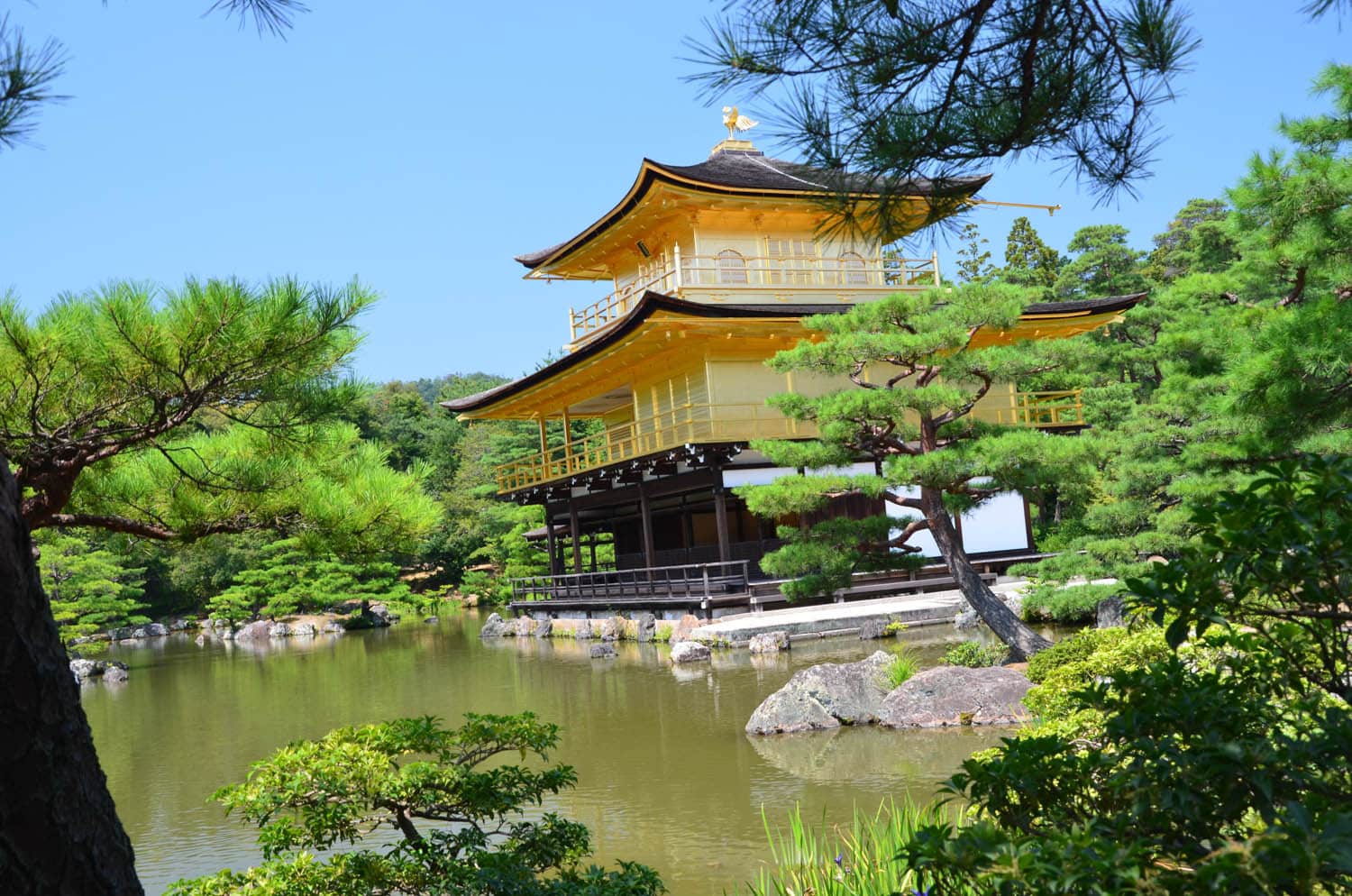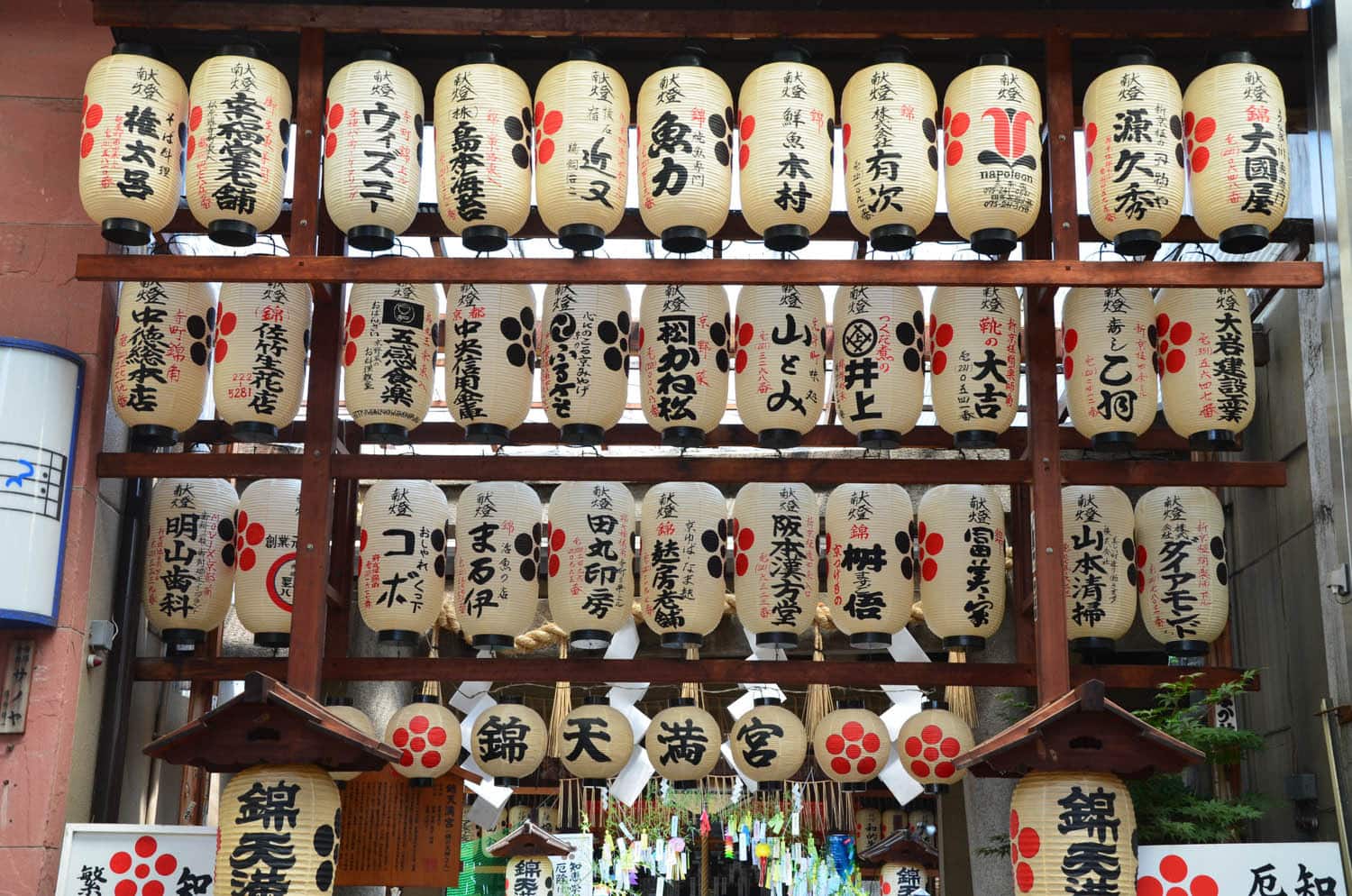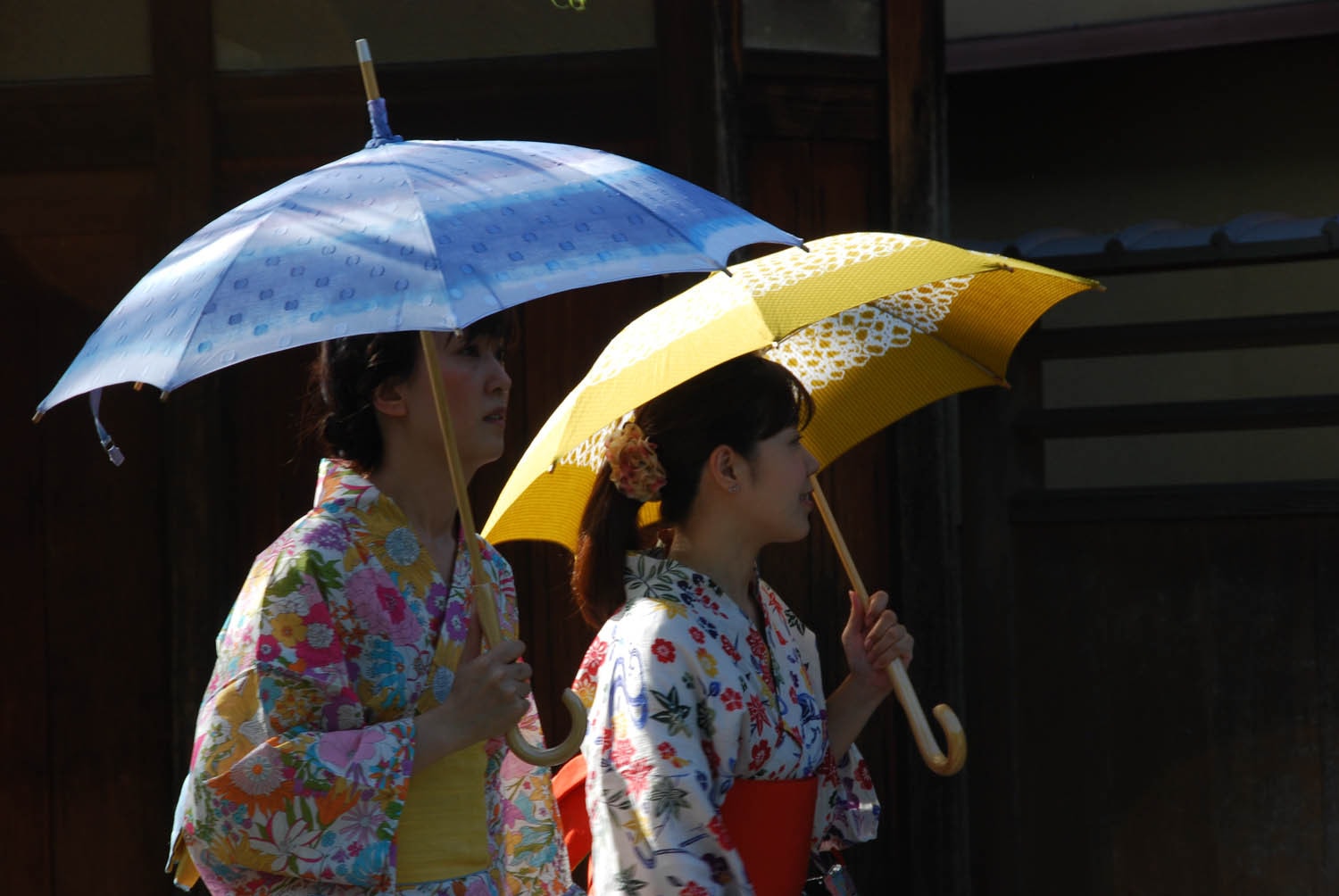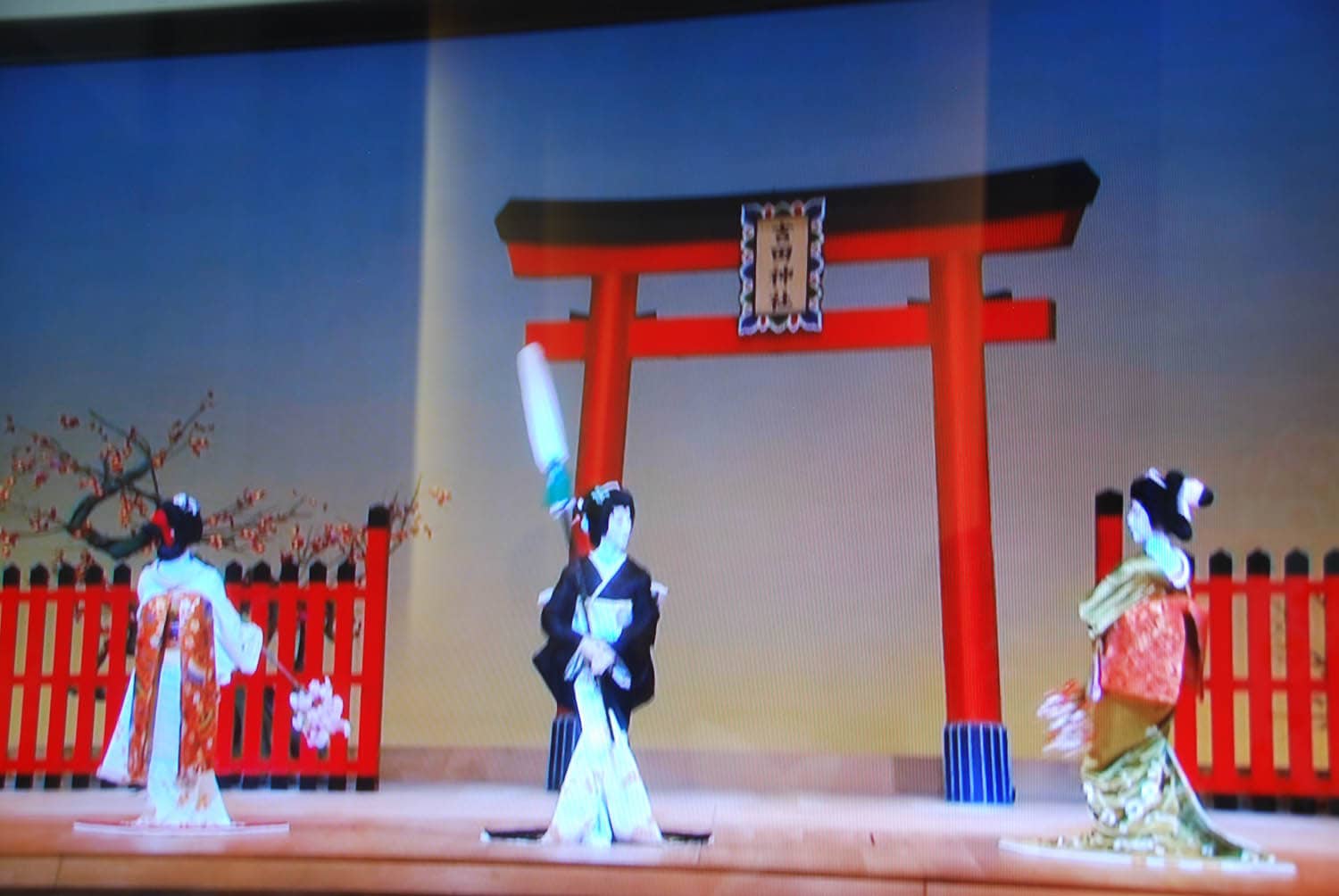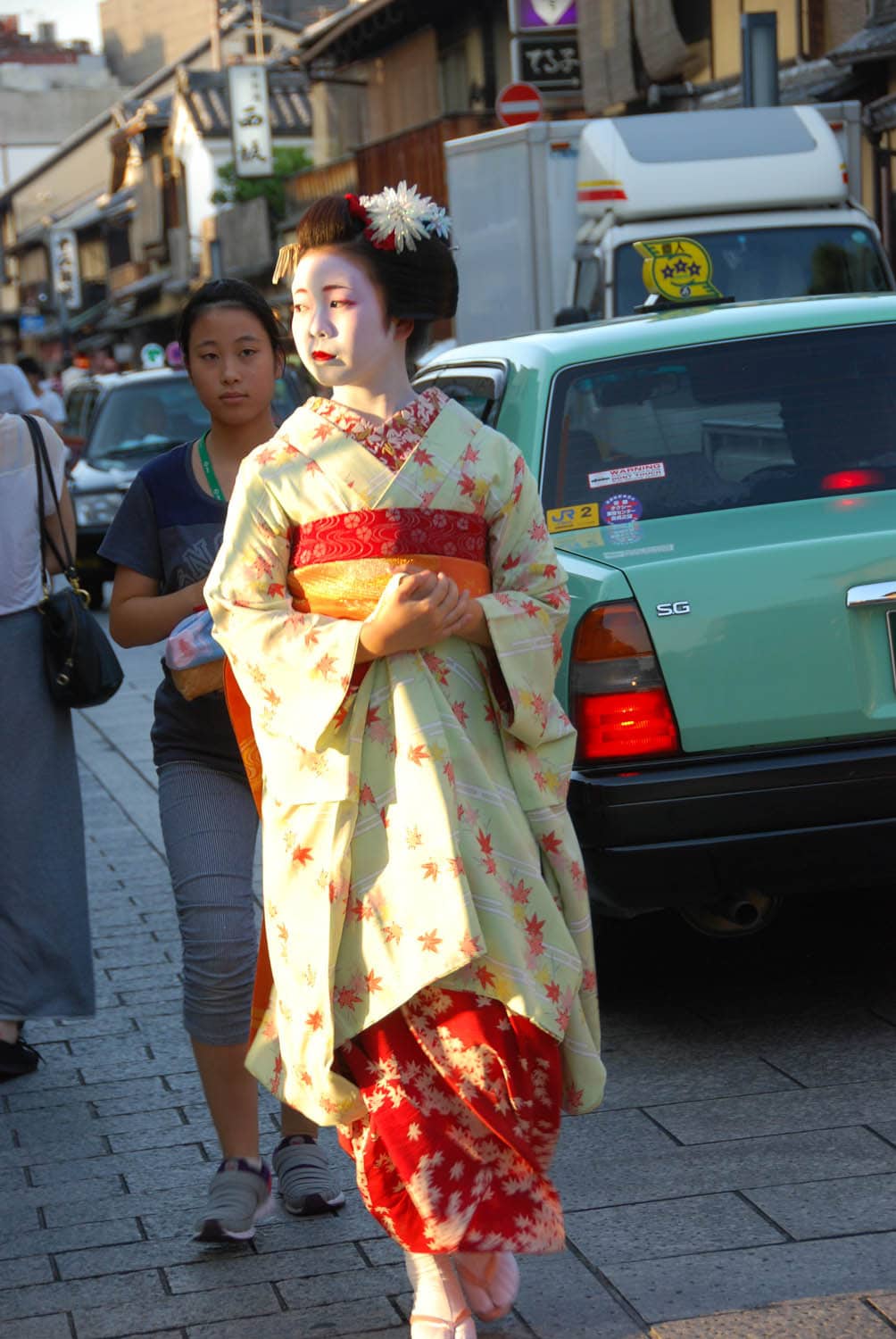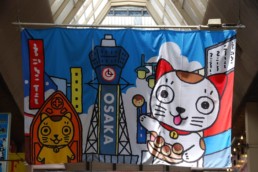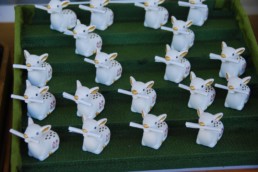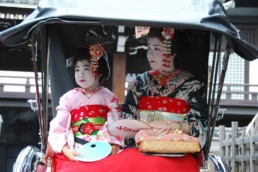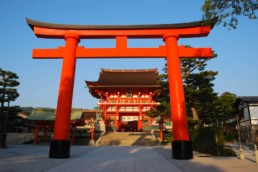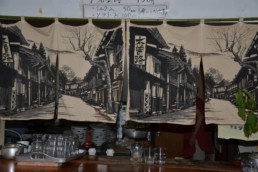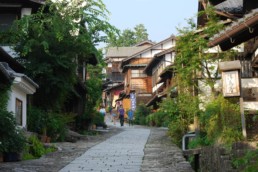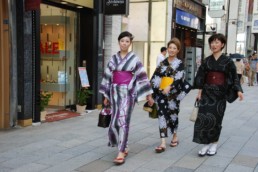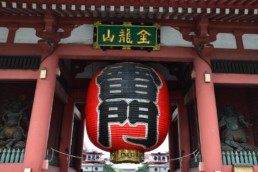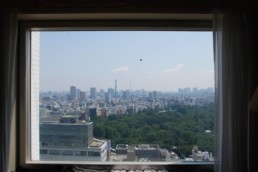For our 3rd and last day in Kyoto, we have planned to visit 3 must-see places: the Kinkaku-ji temple, the Nishiki market, and the Gion district.
We start our day of visits with the world-renowned ‘Golden pavilion’. The Kinkaku-ji temple was built in the XIVth century, and was the residence of Shogun Ashigaka Yoshimitsu (1358-1408) until he retired from political life. The place was made a temple when the Shogun died. Over the centuries, the temple was damaged by several fires and at long last was not rebuilt. The Golden Pavilion, which was destroyed during the Onin war in the XVth century but then rebuilt, was the only building to miraculously escape from the various fires. In 1950, a young monk set it on fire and the pavilion was burnt down. This episode was narrated in the famous Mishima Yukio’s novel ‘The Golden Pavilion’. The current pavilion was rebuilt in 1955 as an exact, identical replica of the original pavilion.
The beauty and harmony of the place are simply incredible. The ‘Golden Pavilion’ is surrounded by a pond and a magnificent garden. Not far from the Pavilion, a tea house built by Emperor Go-Mizunoo adds to the poetry of the site.
As we leave the Kinkaku-ji temple, we decide to take a break and head for the Nishiki market, which is located in the central district of Kyoto. Nishiki is mostly a food market, although you can also find some small souvenir shops. The stalls are spectacular, with fishes of all sorts lying (not swimming) in mysterious sauces, some dried foods which we have never seen before and cannot guess what they are, so many different sorts of mushrooms, strong and unusual smells, and of course many red paper lanterns which signal the shops.
Quite a few restaurants display in their windows plastic reproductions of the foods they serve. It is a very common practice in Japan. We will see very impressive specimens later in Osaka, a city famous for its cuisine. Still we cannot help but find these displays rather entertaining!
In the surrounding narrow streets, we haphazardly find a small, lovely temple, with very nice paper lanterns hanging under the entrance gate.
A bit further, we enter in a large store with dozens of photo booths where you can have your picture taken and then change the look of your hair, your eyes, etc., and so arrange yourself in the most perfect Kawai style! Very entertaining! Our girls spend almost an hour giggling and trying different styles.
It is time to head for the Gion district.
The Gion district, which spreads along the right bank of the Kamo River, is one of Kyoto’s oldest neighborhoods. We start with the Shinbashi area, where the narrow streets are bordered with old wooden houses, and a shallow canal flows peacefully.
It is early in the afternoon, and very hot. The houses are closed, curtains are drawn. We notice some very nice lanterns hanging by the front doors. These lanterns will be lit in the evening, contributing to the very special atmosphere of the Gion district.
The neighborhood comes alive in the early evening. We stroll leisurely along the surrounding streets.
We walk to Gion Corner, a theatre which showcases traditional plays performed by geishas. The theatre is mostly targeted at foreign tourists, and we decide to take a rain check on the show! We nevertheless take some pictures of the video on display at the front entrance. The quick peek makes us feel like we are not walking off empty-handed!
We decide to hang around in the Hanami-koji Street, where the elegant wooden houses are mostly zashiki’s, tea houses where geishas will perform. We are hoping to spot some authentic geishas on their way to a private performance. But quite a few tourists have gathered with the same idea, cameras in hands and ready to run at the first sight of a Japanese woman in a kimono. As it turns out, spotting geishas has become extremely difficult, as they are very discreet and very effective in avoiding the crowds of aspiring paparazzi’s!
The district is very lively at night. In the less traditional streets, many gaming arcades can be found, entry restricted to adults. Gaming is a passion in urban Japan, and gamers are sometimes quite old. The scene looks rather strange to us, with all these bright gaming consoles aligned, the gamers with their eyes riveted on the screens, and an ear-deafening noise made up of a chaotic mix of loud music, gamers’ shouts, and the unnerving console sounds.






